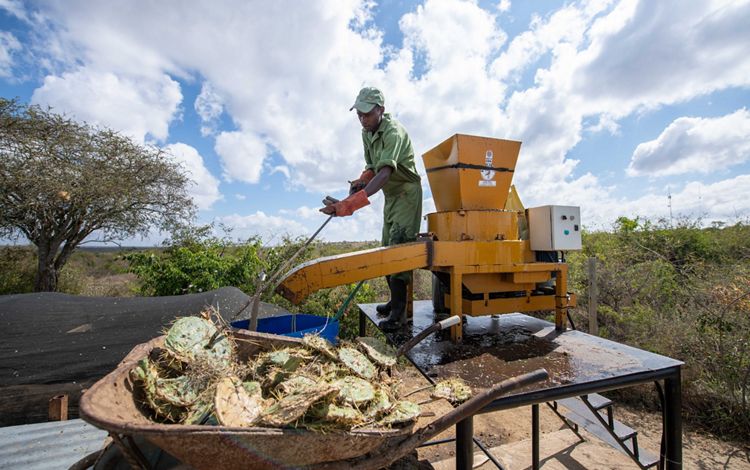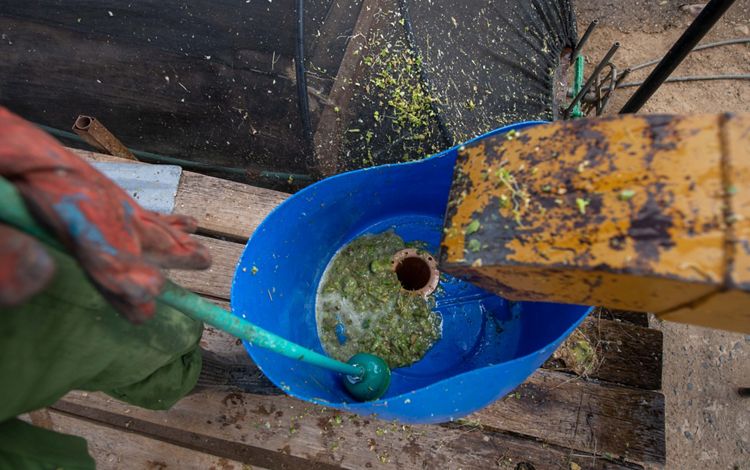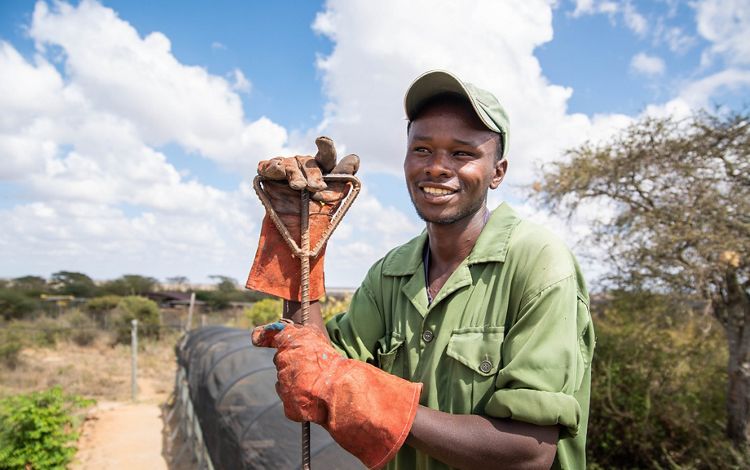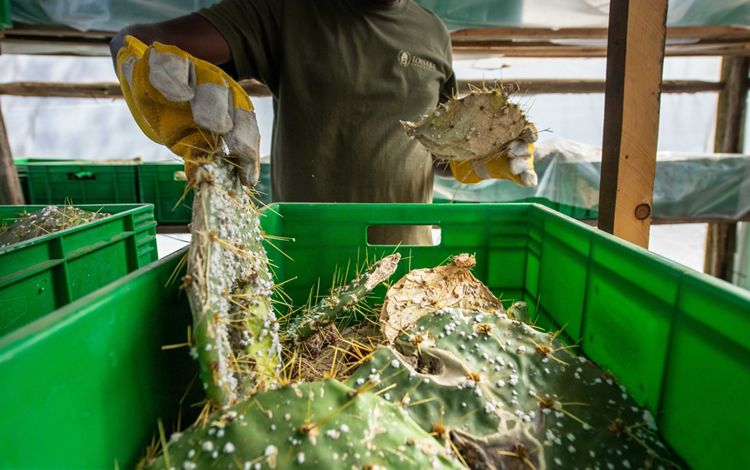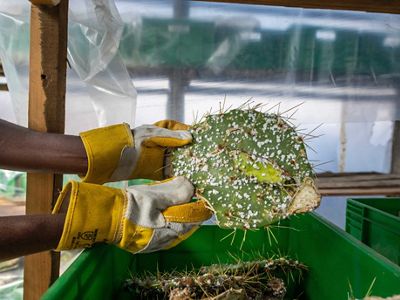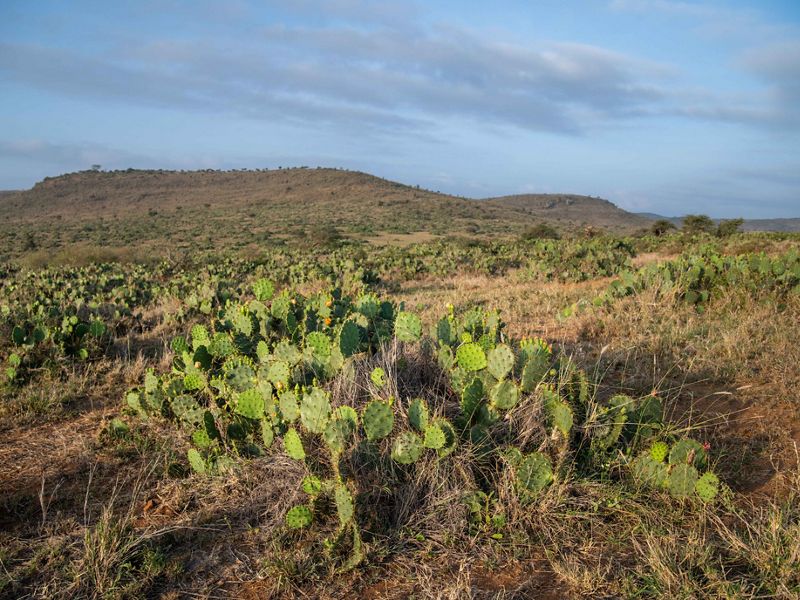
Invasive Cactus The invasive Engelmann prickly pear at Loisaba Conservancy, Kenya. © Roshni Lodhia
On the right side of the road, a herd of Grevy’s zebras gazes unconcerned as you rumble past. On the left, two giraffes periscope up from a cluster of acacias, chewing. In the middle, mounds of cut plants.
The driver weaves, making a point to run over each plopped pile. This real-life video game is part of a desperate bid to rid Loisaba Conservancy of an invading nonnative cactus, the Engelmann prickly pear (Opuntia engelmannii).
Loisaba is a 58,000-acre expanse in northern Kenya that provides essential habitat for lions, wild dogs, and other iconic wildlife. Conserved with TNC's support in 2015, this vast wilderness is remarkably healthy—with an alarming exception: An estimated 20 percent is infested with opuntia, and it’s starting to spread into neighboring community lands.


The prickly pear cactus—most likely introduced by colonialists as an ornamental plant or as “living fences”—crowds out native plants that provide forage for wildlife, and its large thorns harm and even kill wildlife and cattle. Some species are unwitting accomplices in the infestation. Baboons, elephants, guinea fowl, and even tortoises eat the sweet fruit and spread the seeds.
There’s new urgency to defeat the scourge. Loisaba has added a rhino sanctuary and hopes to soon welcome endangered black rhino from other sanctuaries that have reached their maximum capacity. Solitary and aggressive, the species requires a lot of room to breed and thrive. It’s essential to keep the cactus away from the rhinos.
But this invasive species spreads with the impunity of wildfire, even growing on bare rock. It’s too tough to remove by hand, and there’s no point in burning it. With the first rain, it’ll spring right back to life, bloom, and fruit.
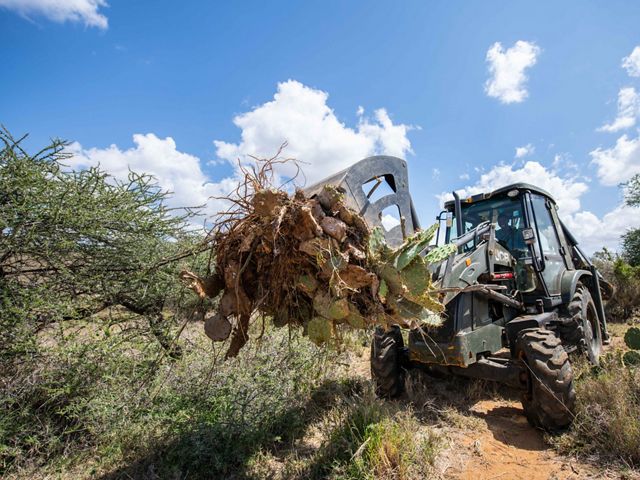
Teams are using heavy equipment to drag out the cactus, roots and all, move it to designated locations, and bury it in deep pits to avoid carbon emissions as it rots. This results in fertile “hot spots” where native plants sprout and flourish.
They’re also deploying a tiny warrior: Cochineal insects that feed on the cactus’ moisture and nutrients, thereby killing the plant—and only this plant. This method has been rigorously researched to ensure no unintended damage to native species in this landscape. Once prickly pear is gone, the insects will die off.
As of June 2023, Loisaba Conservancy has cleared 3,100 acres of opunita, which is approximately 2,060 full-sized soccer fields. Thanks to a generous donation from TNC, they were able to increase the pace of removal in 2023. They are clearing an average of 90 acres per month (about 11,000 plants), up from a monthly average of 32 acres in 2022. At the current pace, Loisaba can be free of opuntia within five years, and the cochineal will remain on guard for rogue pop-ups. TNC science, including multilayered aerial mapping on plant distribution and trends, will continue to guide how best to get opuntia out and keep it out.
While grinding piles of cladodes under your tires may not be as effective as the cochineal, for the people fighting this scourge, it certainly feels good.
More on Opuntia
